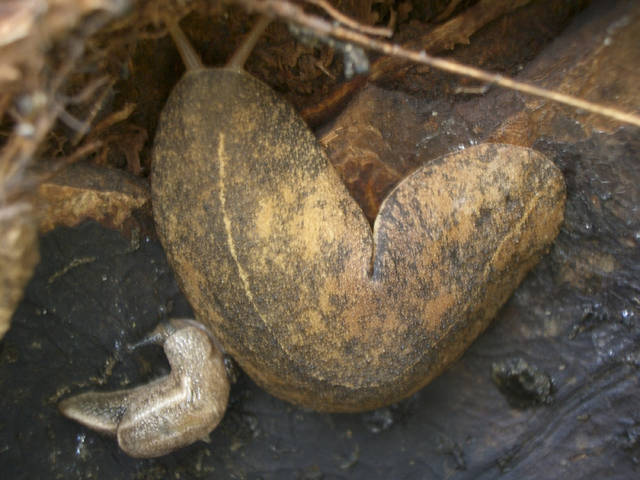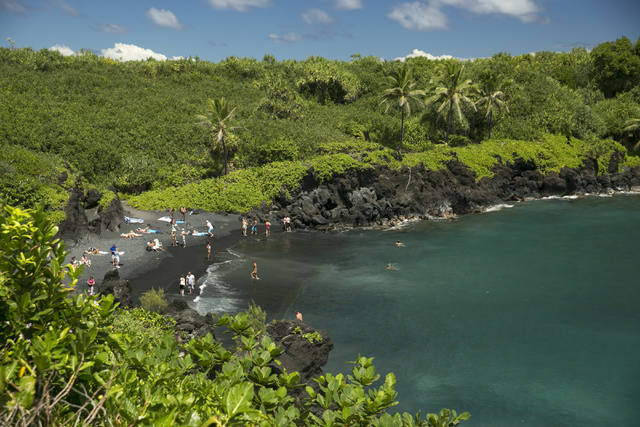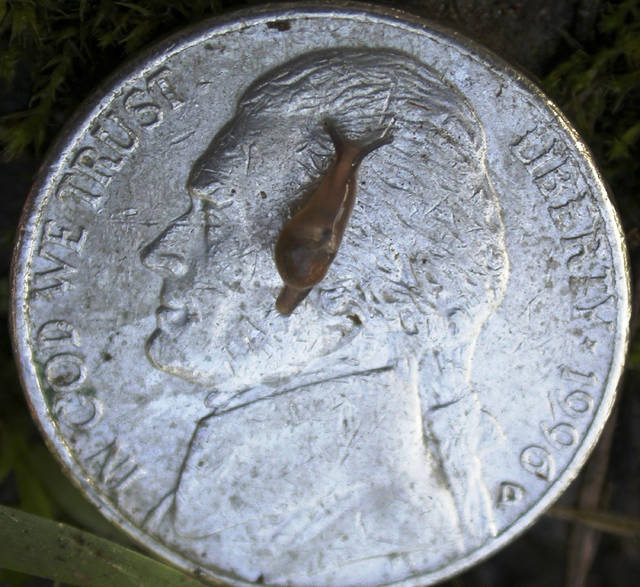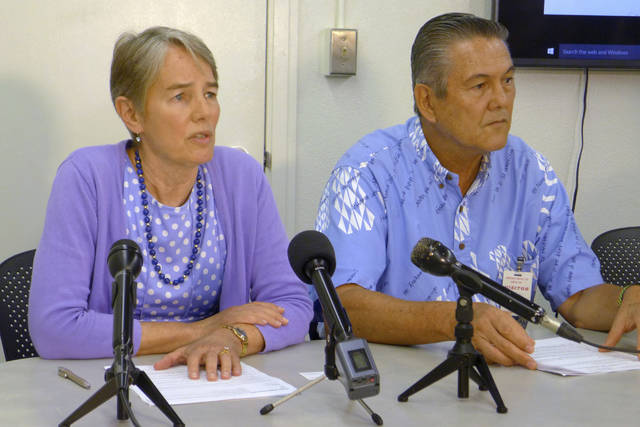Q&A: Hawaii reassures tourists after brain parasite cases
HONOLULU (AP) — A California couple on their honeymoon and two people who drank a homemade herbal beverage are among the rising number of victims in Hawaii falling ill with a potentially deadly brain parasite.
After the newlyweds’ plight with rat lungworm disease recently got attention online, the couple and some experts accused Hawaii of failing to adequately warn tourists and residents of the danger they can face. Tourism officials say the disease is rare and there’s no need to cancel vacation plans.
“It never occurred to us that our honeymoon would be two weeks in paradise to return home with worms in our brains,” Ben Manilla of San Francisco said in an email after spending a month in the hospital, undergoing several operations and suffering complications.
Hawaii has seen the same number of infections so far this year that it will often get annually. Eleven cases have been confirmed — six on Maui and five on the Big Island.
The reason for the “concerning increase” is not clear, said Dr. Virginia Pressler, director of the state health department. But it could be blamed on a recent Maui influx of a semi-slug that can carry the disease.
What to know about the disease and how the state is responding:
———
WHAT IS RAT LUNGWORM DISEASE?
A roundworm parasite found in rodents causes the disease affecting the brain and spinal cord. When rodents expel the larvae of the worm, they can be ingested by snails, slugs, crabs and frogs, then passed to people.
The disease is prevalent in Southeast Asia and tropical Pacific islands and has been seen in Africa, the Caribbean and the U.S. It’s rare, and most people completely recover without treatment, according to the U.S. Centers for Disease Control and Prevention.
Symptoms can range from mild headaches to temporary paralysis, and diagnosis is difficult, requiring a spinal tap, said William L. Gosnell, program director for the graduate certificate in tropical medicine at University of Hawaii’s medical school.
Hawaii sees between one and 11 cases each year, with 11 in 2016, state health officials said. Two deaths have occurred since officials began tracking it in 2007.
———
HOW DO PEOPLE GET IT?
By eating food contaminated by the larvae of the parasite. They can be found in raw snails or in produce contaminated by tiny snails or slugs.
Two adults on the Big Island got the disease after consuming contaminated homemade elixir, health officials said last week.
They left homemade kava, a dietary supplement, in uncovered buckets overnight and noticed slugs after drinking it, Pressler said.
Four others who drank the same batch are suspected of being infected.
———
HOW DO YOU PREVENT IT?
Avoid eating raw snails or slugs and properly wash produce.
Manilla said had he and his wife, Eliza Lape, known about the disease, they would have more thoroughly cleaned fruits and vegetables. They believe they contracted it in the remote Hana area of Maui early this year.
“It’s easy in the U.S. to think that we’re impervious to things that occur often in the developing world and apparently in some of the remote areas of Hawaii,” Manilla said in an email.
The couple declined an interview but told Hawaii News Now that the symptoms began after they returned to San Francisco.
“My symptoms started growing to feeling like somebody was taking a hot knife and just stabbing me in different parts of my body,” Lape told the Honolulu news station.
Still, the couple can’t wait to return to Hana, Manilla said.
“We’ll do it a bit differently next time knowing what we know now about rat lungworm disease,” he wrote.
———
WHAT IS HAWAII DOING ABOUT IT?
The state health director says the department works with the Hawaii Tourism Authority to warn visitors about risks on the islands.
Pressler pointed to “hard to miss” information about the disease on the department’s website .
The tourism agency also has been meeting with members and contractors who book travel to explain the disease, and it’s working on getting messages to tourists that Hawaii is safe, said George Szigeti, president and CEO. It noted a special alert on its website and a mention in its e-newsletter.
For residents, the state is holding community forums, Pressler said.
Hawaii needs to do much more, said Susan Jarvi, professor of pharmaceutical sciences at the University of Hawaii’s Hilo campus.
“I think most people on the island of Hawaii feel the state hasn’t done enough to help,” she said.
Jarvi wants to see more funding to combat disease-transmitting pests and more education about controlling invasive species.
“The research and education on this disease is really lacking,” she said.
———
SHOULD TOURISTS AVOID HAWAII?
The tourism authority said people should not overreact and urged visitors to keep eating at restaurants and enjoying fresh produce.
“The key facts that everyone needs to remember about rat lungworm disease is that it is very rare, it is very uncommon for people to get infected, and the disease is easily preventable by properly washing and storing all food, especially produce, before eating,” Szigeti said in a statement.
Ashlynn Martin, of Yuma, Arizona, has been planning a Maui vacation for two years. The October trip isn’t refundable, so she and her husband aren’t changing their plans.
“We’re just going to take the chance,” she said, adding that she will make sure to wash produce. “It worries me, but I feel like so many people travel to Hawaii. … I think we’ll be OK.”
———
Associated Press writers Cathy Bussewitz in Honolulu and Michael Stobbe in New York and AP researcher Jennifer Farrar in New York contributed to this report.







